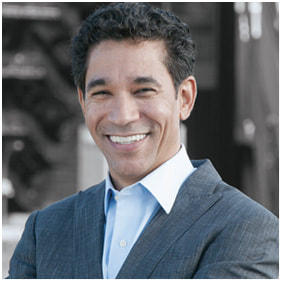2020 Jobs Outlook
Posted 5/1/2020
The industry professionals in this seventh edition of LD+A’s Careers Outlook are all new faces—save one. Representing manufacturing, design and rep agencies, the group includes: Julie Blankenheim (managing principal/specification sales, Chicago Lightworks); Jason Chadwick (director of sales, ILP and Green Creative); Rick Earlywine (senior vice president/architectural and downlighting solutions, Acuity Brands Lighting); Nelson Jenkins (principal, LumenArch); Lesley Matt (senior vice president, TCP); and Tejal Thakur (founder and owner, LightSpek). We started off with our traditional opening question:
WHAT POSITIONS WILL BE MOST IN DEMAND IN 2020?
Matt: The lighting market is changing dramatically, and I see digital [product] positions in the highest demand for 2020. This is a very broad category, as I view it as anything from digital marketing and e-commerce jobs in the distribution channels, IT professionals working on code to make the order-to-customer process quicker and smoother, all the way to IoT sales professionals providing a value-added, custom-engineered solution for smart building applications. Demand for individuals with the technical knowledge of code will continue to grow in the lighting industry.
Earlywine: We are continuing to focus hiring in three areas—electronics and electrical engineering as our portfolio expands into networked and smart lighting systems; optical design; and field-facing technical sales [people] on networked systems. I also think that positions in IT and cybersecurity will continue to be high demand.
Chadwick: We’ve seen a tremendous amount of consolidation in the LED market in the last few years. Additionally, products are increasingly becoming more innovative and have integrated controls and dimming capabilities. I suspect the positions most in demand in 2020 will be regional sales managers, product line managers and application managers who have a solid background in a number of different areas in the LED industry. Hiring managers will be looking for candidates that have experience managing luminaire lines as well as controls and lamps.
Thakur: I believe sales, marketing, business analytics, and having a growth mindset will always be in demand—year after year.
Jenkins: As lighting becomes more technology driven, practitioners who can bridge the knowledge gaps between disciplines have become increasingly valuable and in demand.
Blankenheim: There is now, and will be in 2020, a high demand for people who understand controls. With code updates and the advent of wireless networked systems, our industry needs knowledgeable people designing, selling and programming control systems. Also, for sales agencies, inside sales staff that are true “lighting people” and speak the language of lighting are extremely hard to find and a real asset.
Chadwick: Another area for growth is in the energy sector. We have seen a lot of strength in the ESCO market and retrofit space. The candidates that have been involved in the energy and ESCO market have a distinct advantage over other candidates as larger agents and manufacturers seek to grow these departments.
WHAT POSITIONS WILL BE LESS IN DEMAND THIS YEAR?
Jenkins: Practitioners who want to “stay in their lane” are going to be passed by as roles in the industry continue to expand.
Chadwick: Now, more than ever, selling is less about who you know and more about what value you bring. This goes for agents as well as manufacturers. I see 2020 as the year in which the antiquated model of what I would call “writing orders” and relationship-based selling shifts to a culture of accountability on all fronts. The only positions that will not be in demand are the positions that do not bring value to customers. If an inside quoting person, for example, generates quotes but offers little in the way of enhancing value, reducing costs or speeding up delivery, the position likely will not last too long as this market accelerates.
Blankenheim: If I had to pinpoint one role that would not be growing, it would be lighting showrooms. The internet is taking over the retail lighting space.
Matt: I see a decrease in demand for traditional sales manager roles as the industry is becoming more specialized and requires a different, more technical skill set. Gone are the days of coffee and donut runs—electrical distribution to large national accounts all demand a higher level of sales individual from lighting manufacturers to provide quick and accurate information.
Thakur: I believe the internet has profoundly impacted our distribution channels. It undermines these traditional channels and will soon render them obsolete.



WHAT PRODUCT AREAS WILL LEAD TO THE MOST JOB CREATION?
Thakur: There’s a demand for “well buildings.” We’re experiencing a global shift in the way we design spaces from materials to mental health. IoT, LiFi, circadian, all encapsulate “well building” standards.
Earlywine: In the immediate future, the ability to create smart, networked total lighting solutions will have the most impact in the industry.
Matt: I see 2020 as the year where the horticulture lighting market really begins to transform. With that, it will need product managers, engineers, technical sales team members and lighting designers just to service this highly specialized market.
Jenkins: Dynamic lighting continues to expand, both on a fixture and controls front. The cost premium for these advanced technologies are becoming more affordable due to increased demand and attainability. In addition, lighting that can solve multiple requirements simultaneously have increased value, such as lighting and acoustics, lighting and security, and lighting and data.
Chadwick: I believe that IoT will see the most jobs creation in 2020. As technology in our industry advances, a natural progression is to integrate other technologies. A good example is luminaires and controls. As products are introduced to the market, it will demand people who have the knowledge to deliver the value that IoT can provide and end-user customers are demanding more and more.
Blankenheim: Anything having to do with implementing control systems.
WHAT CHANNELS WILL CREATE THE MOST JOBS IN 2020?
Jenkins: Consumers are becoming savvier about the impact of lighting both at home and in commercial spaces. This expectation is going to drive the market in all areas of the industry from healthcare to hospitality, retail to residential, adaptive re-use to historic preservation.
Earlywine: As we see plan-and-spec projects taking longer to build, we see more contractor design-build activity. As a channel partner with distribution, we see adding new product, service and technologies in this channel as a growth area.
Chadwick: National accounts will continue growing in 2020. For example, one of our largest customers in California only buys 5% of the products in California, while 95% of the business they do is all around the U.S. To capture that business and the growth opportunities, it was necessary to have a strong national accounts team in place. Our national accounts team has doubled in size in the last six months and I suspect it will double in size again in the next 12 months.
Thakur: I believe healthcare, artificial intelligence, well building, solar and wind technologies will lead job growth and tremendous innovation.
“The internet has profoundly impacted our distribution channels. It undermines these traditional channels and will soon render them obsolete.”
– Thakur
DO YOU ANTICIPATE HIRING MORE OR LESS CONTRACT EMPLOYEES THAN IN 2019?
Blankenheim: We anticipate hiring employees, however, we will bring on full-time, in-house talent, not contractors. We only employ the use of one outside contractor currently and for us, in-house staff is still the only way to grow our relationship-based business.
Chadwick: I anticipate bringing on more W2 employees than contract employees for two reasons. First, we have converted most of our contract employees to W2 because they have brought so much value to our team. As the labor market continues to be tight and the competition continues for top talent, we wanted to lock our best people into place. Another reason there will be fewer contract employees is due to a lot of the regulations surrounding what classifies as a contract employee.
Jenkins: We anticipate significant growth over the next year at all levels of experience.
Thakur: Yes, I believe our labor market is quite strong and there seem to be more jobs than seekers at the moment. I hope this demand continues to force more job creation.
Earlywine: We plan to hire less contract employees in the upcoming year as we continue to improve our processes and capabilities to leverage our internal employee base.
Matt: I anticipate having the same amount of contract employees in 2020 as in 2019.



A “GLOBAL TALENT TRENDS” REPORT SAYS CREATIVITY IS THE MOST IN-DEMAND SOFT SKILL. DO YOU AGREE?
Earlywine: If “creativity” is meant in this instance to cover more than just design and innovation, then yes. In an increasingly competitive industry, employees that are creative in providing winning products and services to customers, reducing the time and cost of doing business, and finding new ways to reach customers, will be equally important as those that use creativity for product design and innovation.
Thakur: I do believe creativity is important. However, critical thinking, complex problem-solving skills and emotional intelligence are even more important to succeed in the modern work environment.
Matt: I completely agree that creativity is the most sought-after soft skill. An individual’s ability to be creative shows a higher level of thinking. From a salesperson’s ability to think on their feet to solve a customer’s problem, to an engineer designing and developing new ways to light our world; it all stems from a person’s ability to think different and touches all roles throughout an organization.
Blankenheim: I would agree 100%. We can teach lighting—and we do for over 75% of the people we hire. However, to teach the personality, work ethic and communication side of the business slows us down tremendously. We engage our entire team monthly on topics such as emotional intelligence, trust, respect and empathy. To be successful we have to communicate with and treat the person sitting next to us as if they were our most important customer.
Chadwick: I do not agree. I think the most important soft skill that employees need to develop is emotional intelligence. Accountability, interacting with other employees, contributing to the team and self-awareness are all parts of emotional intelligence. Without it, success in almost any position is extremely limited and when this skill is lacking, we see the highest amount of turnover.
Jenkins: “Creativity” is often used interchangeably with “problem solving.” Finding people that look beyond the status quo is challenging. It often seems easier to do the same thing over and over because change is challenging and often difficult. Technology and technology upgrades are an example of this. We upgrade to new operating systems on our computers or phones—the beginning can be excruciating, but before we know it, we have adapted to a new paradigm. Surrounding ourselves with people who work collaboratively and can adapt to change makes evolution easier and less contentious.




